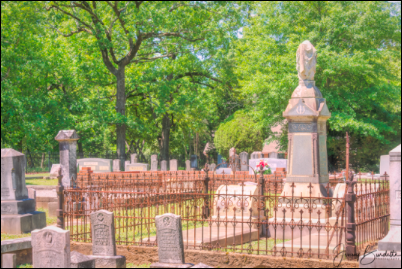No One Who is Remembered Is Ever Truly Gone
Burial grounds are far more than a final resting place. Cemeteries are repositories of history; headstones provide glimpses into intriguing biographies while the accompanying dates bespeak of bygone eras.
As with places of worship, cemeteries come in all shapes, all sizes. Flanders Fields in France has endless rows of white crosses surrounded by fields of red poppies to commemorate those who fell in World War I. A crypt in France’s Père Lachaise cemetery holds the body of Polish composer Frédéric Chopin while his heart resides in a jar encased in a stone pillar in Holy Cross Church in Warsaw. The column bears a verse from the Book of Matthew, “For where your treasure is, there your heart will be also.” The wind that rustles among the lichen-filled stones warns us to “seize the day” as the sands of our hourglasses are forever falling. 
The genesis of this blog occurred when my friend and I were discussing The Historic Woolsey Cemetery adjacent to the church founded by her great-great-great-grandfather and where several of her family members are interred. The recently formed nonprofit Friends of Historic Woolsey’s tagline is “Preserving Our Yesterdays for Tomorrow.” These words changed my perspective, and rather than viewing a graveyard as a citadel of depression, I became mindful of its importance. The real estate of the dead prevents its residents from receding into the miasma of the past. The granite monuments fill a communal need to connect with our forebears.
Tourists oftentimes make pilgrimages to the burial sites of religious leaders, historical personages, or beloved artists. The graveyard in St. Mary’s Catholic Church in Rockville holds the shared headstone of iconic America writer F. Scott Fitzgerald and his wife Zelda. Their epitaph holds the words from the last line of The Great Gatsby, “So we beat on, boats against the current, borne back ceaselessly into the past.”
As we reflect about those who are buried in our cemeteries, let’s remember that their epitaphs are a way of saying that no one who is remembered is ever truly gone.


